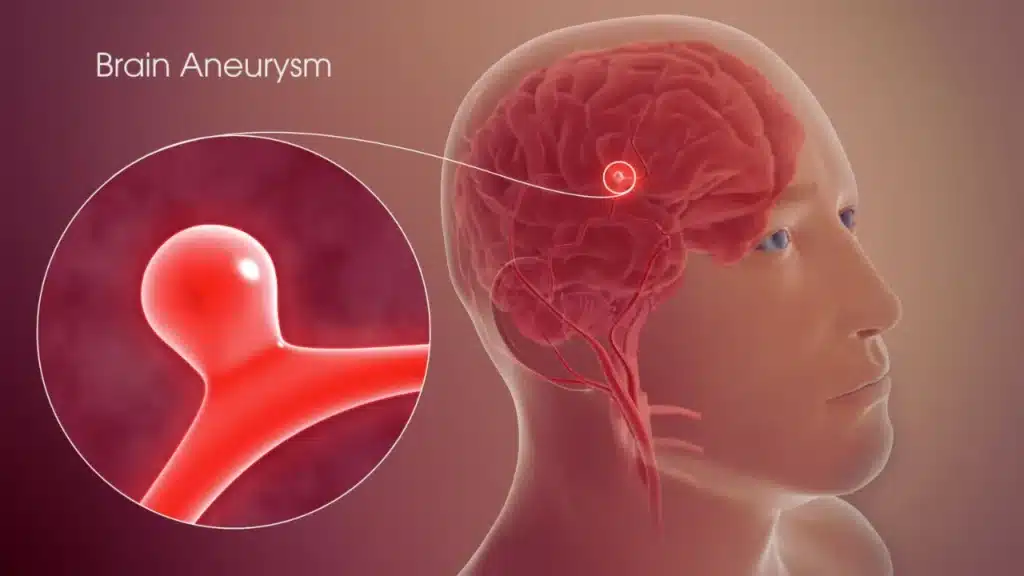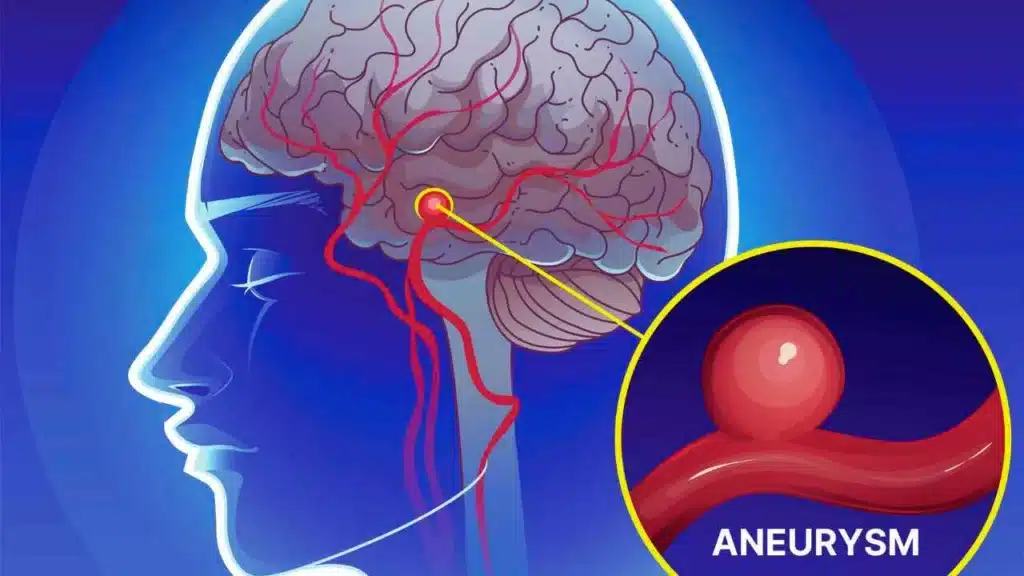Picture this: you’re going about your day when a doctor drops the term “brain aneurysm.” It’s enough to make your heart skip a beat. A brain aneurysm is a bulge in a blood vessel in your brain, like a weak spot in a tire that could burst under pressure. Sometimes they stay quiet, but when they rupture, it’s a crisis that can turn everything around. From game-changing treatment to smarter methods of catching these stealthy bulges before they can hit, the future for brain aneurysms has never been brighter. This article discusses survival rates, new facts, and what’s new in fighting brain aneurysms, in a friend-to-friend conversation, after they’ve researched.
Brain Aneurysm Survival Rate

Survival when it comes to brain aneurysms differs in case of ruptures or not. Unruptured aneurysms generally permit people to live normally with regular check-ups or minor repairs, but a rupture is serious business a bout 28-33% of people don’t survive the first three months. That is better than the 45% death rate a decade ago due to faster emergency response and better treatment. Survivors can have problems like memory loss or weakness (about 18% do), but they do resume their lives within time and with the aid of counseling. Your outlook relies on what is the size of the aneurysm, where it is located, and how quickly you get treatment. Brain Aneurysm Survival Rate.
Why Do Ticking Time Bombs Occur?

Brain Aneurysm Survival Rate. Aneurysms tend to occur where brain arteries split off, like areas of weakness along a pipe. Your genetics may predispose you to conditions like Ehlers-Danlos syndrome or kidney disease tend to run in some families and put you at risk. Then there is lifestyle: untreated high blood pressure, smoking, or heavy drinking can weaken those vessels over time.
Five years from now, they may be talking about your blood vessels and how stress affects them, in which case that occasional buzz might do more good than you realize, and that daily walk or that slow breathing could as well. Things like leafy greens or walnuts, packed with vitamins and healthy fats, can do the same for your blood vessels, too.
The Numbers Tell a Story
These stats show why catching an aneurysm early is a game-changer and why we need more funding right now. Research gets just $3.20 per affected person each year.
| What’s Being Tracked | What We Know |
| How Common? | One in fifty Americans, or around 6.5 million people, have an unruptured aneurysm. |
| Ruptures Yearly | Around 8 per 100,000 people, or 25,000 U.S. cases, have a rupture each year. |
| Death Rate | 28-33% of rupture cases are fatal within three months; 10% don’t reach a hospital. |
| Who’s at Risk? | Most common in ages 40-60; women are 1.7 times more likely than men. |
| Cost Impact | Treating a rupture can cost $140,000 on average, 75% more than unruptured cases. |
Brain Test in Diagnosing and Treating Aneurysms

Imaging technology, including high-definition CT scans, can spot bulges as small as 0.3 mm, enabling doctors to act before symptoms occur. For therapy, coiling inserting small coils of metal that compact themselves into the aneurysm to seal it off, is what most people choose, something less traumatic than cracking open your skull. More recent stents that redirect blood flow are a big thing for complex aneurysms, for shortening recovery periods. Scientists are also investigating a clever idea: patches made from lab-grown tissue to strengthen weak vessels without surgery. These advances may have you back in the bosom of your home in a couple of days, especially if the aneurysm hasn’t burst. Brain Aneurysm Survival Rate.
Measures to Keep Yourself Safe
Brain Aneurysm Survival Rate, You can’t write new code for DNA, but you can manage other dangers. One of the major ones is high blood pressure, so cutting back on salty snacks, working out at the gym, or following the medications your doctor prescribes can tame it. Smoking is a big risk factor; it triples your odds of developing more than one aneurysm, but quitting will halve that risk in a flash.
Five years from now, they may be talking about your blood vessels and how stress affects them, in which case that occasional buzz might do more good than you realize, and that daily walk or that slow breathing could as well. Things like leafy greens or walnuts, packed with vitamins and healthy fats, can do the same for your blood vessels, too.
Life After an Aneurysm
If you make it through a ruptured aneurysm, recuperation can be a marathon. About 18% of survivors find it hard to deal with such things as foggy memory or trouble with movement, depending on where the brain was injured. Therapy, physical, speech, or cognitive, can be magic, and most get better within a year or two. If your aneurysm has not ruptured, treatment commonly enables you to get back to your usual life soon, although you will be getting scans to stay on top of it.
In 2025, support groups are popping up on every corner that help people deal with the stress of having an aneurysm. Coiling might take a day or two in the hospital, but surgery would take longer. Having someone to discuss with on how stressful it all is is a bigger part of healing. Brain Aneurysm Survival Rate.
Getting the Word Out
Brain aneurysms aren’t in the headlines like the bigger-named diseases. Organizations are fighting to secure more funding for research on such things as how to better identify which aneurysms have a higher chance of rupturing. In 2025, they’re educating individuals to recognize a “thunderclap” headache, a stabbing, searing pain that “yells get to the ER now.” Grassroots movements like online forums or community strolls are getting the word out and rallying support for victims. They aim to lower the 10% who don’t make it to the hospital by getting individuals to act swiftly when symptoms hit.
What’s Around the Corner?
Times are brightening for brain aneurysm treatment. In 2025, researchers are testing wearable technology, like blood-pressure-monitoring bands that keep tabs on the health of your vessels, to identify problems before they happen. Preliminary investigations in using gene editing to prevent aneurysms in humans with high-risk DNA are also underway. Treatments are more personalized than ever and tailored to your unique body, which could make them more effective. In these ways, people who will have aneurysms in the future can have better lives and die fewer deaths.
FAQs About Brain Aneurysm Survival Rate
How prevalent are brain aneurysms?
About 1 in every 50 individuals, about 6.5 million individuals in the U.S.has an unruptured aneurysm. Ruptures affect about 25,000 Americans each year.
Can young people have them?
It doesn’t occur frequently, but kids and young adults can develop aneurysms, most commonly because of inherited diseases or vessel defects. Survival is wonderful, around 88%, but ruptures are a big deal anyway.
What’s the classic red flag for a tear?
The characteristic symptom is a headache that arrives like a sledgehammer, more painful than anything you’ve ever experienced in your life. You will also feel queasy, your vision will blur, or you will pass out. Call 911 immediately.
Is there anything that you can do, if it is not genetic, to head off an aneurysm?
Not everything, but controlling your blood pressure, quitting smoking, and reducing stress do. If you have a known genetic susceptibility, you need periodic scanning.
How frequently should you screen for an unruptured aneurysm?
It differs by size and overall health, but most people are scanned every 6-12 months for small, stable ones. Larger ones may require more frequent follow-up.










